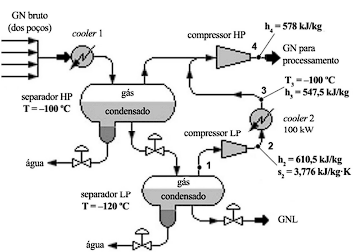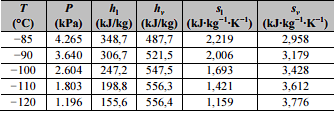Questões de Concurso Público TBG 2023 para Engenheiro Júnior – Ênfase: Manutenção, Mecânica
Foram encontradas 100 questões
Based on text CB1A2-I, judge the following item.
Oppenheimer’s paper on black holes received little attention
at the time it was published.
Based on text CB1A2-I, judge the following item.
According to Cathryn Carson, Oppenheimer’s work on
neutron stars and black holes was meaningless at the time
it was developed.
Based on text CB1A2-I, judge the following item.
With the help of his students, Oppenheimer could easily shift
from one research topic to another.
Based on text CB1A2-I, judge the following item.
The word “war” (first sentence of the second paragraph)
refers to any war.
Based on text CB1A2-I, judge the following item.
Hartland Snyder helped Oppenheimer write his least relevant
paper in physics.
The pronoun “they” (last sentence of the last paragraph) refers to the word “assumptions”.
Based on the vocabulary and linguistic aspects of text CB1A2-I, judge the following item.
The word “overshadowed” (first sentence of the second
paragraph) means, in the context of text CB1A2-I, “made
less noticeable”.
Based on the vocabulary and linguistic aspects of text CB1A2-I, judge the following item.
The word “installment” (first sentence of the first paragraph)
means, in the context of text CB1A2-I, “to make it ready
to use”.
Based on the vocabulary and linguistic aspects of text CB1A2-I, judge the following item.
The word “physicists” means “medical doctors”.
Based on the vocabulary and linguistic aspects of text CB1A2-I, judge the following item.
Graduate students are people studying for a master’s degree
or doctorate.
A união de tubulações, componentes e acessórios realizada por conexões com roscas tem emprego limitado nas instalações industriais de gás natural, sendo proibida em serviços considerados críticos ou perigosos.
Julgue o item subsequente, no que diz respeito às especificações bem como aos fatores de seleção e meios de ligação para tubulações industriais na área de petróleo e gás.
Devido à sua grande resistência à corrosão e ao seu baixo
custo, as tubulações de aço SAE 1020 são recomendadas
para aplicações sujeitas à alta corrosão.
Julgue o item subsequente, no que diz respeito às especificações bem como aos fatores de seleção e meios de ligação para tubulações industriais na área de petróleo e gás.
Embora a união por flanges sobrepostos tenha baixo custo e
sua instalação seja mais fácil que a de outros tipos de flanges,
ela não é recomendável em serviços severos que envolvam
pressões elevadas em tubulações de vapor, significativas
variações cíclicas de temperatura ou em casos de ocorrência
de corrosão sob contato.
Julgue o item subsequente, no que diz respeito às especificações bem como aos fatores de seleção e meios de ligação para tubulações industriais na área de petróleo e gás.
A soldagem por brasagem é um método de conexão
permanente amplamente utilizado em sistemas de tubulação
de petróleo e gás.
Julgue o item a seguir, relativo aos componentes empregados em tubulações industriais, como válvulas, purgadores, filtros e separadores.
Dada a sua alta capacidade de controle de vazão, as válvulas
de esfera comuns são a melhor opção quando se requer um
controle preciso do fluxo de fluidos.
Julgue o item a seguir, relativo aos componentes empregados em tubulações industriais, como válvulas, purgadores, filtros e separadores.
Separadores gravitacionais são utilizados para a remoção de
partículas sólidas que possam estar presentes no fluxo de
gás, pois eles funcionam com base no princípio de ação da
força centrífuga sobre essas partículas.
Julgue o item a seguir, relativo aos componentes empregados em tubulações industriais, como válvulas, purgadores, filtros e separadores.
O filtro de cesto é projetado para filtrar sólidos presentes no
gás natural por meio de malha metálica, com grande área
filtrante, o que garante alta capacidade de reter sólidos
particulados, e o fluxo de dentro para fora do cesto permite
que o contaminante seja retido no filtro.
Julgue o item a seguir, relativo aos componentes empregados em tubulações industriais, como válvulas, purgadores, filtros e separadores.
Purgadores de boia são empregados em instalações de gás
natural para a remoção de condensado acumulado em
separadores e equipamentos de processamento.

Internet: <e-education.psu.edu> (com adaptações).
O esquema precedente ilustra uma unidade de tratamento de gás natural (GN) recebido em estado bruto dos poços de exploração. Nas condições operacionais dessa unidade, uma produção de GN de 10 kg/s é enviada para processamento, além de gás natural liquefeito (GNL), não mostrado no processo.
Aplicam-se, ainda, as seguintes simplificações:
• variações de energia cinética e potência são desprezíveis;
• não há troca de calor com as vizinhanças dos volumes de controle nos processos;
• as fases gás e líquido nos separadores estão em equilíbrio;
• as perdas de carga no escoamento são desprezíveis; • o efeito da água e de outros componentes sobre as propriedades mostradas para o gás natural não devem ser considerados.
As propriedades de saturação do GN são informadas na tabela a seguir, em que T significa temperatura; P, pressão absoluta; h1 e hv, as entalpias específicas do líquido e do vapor saturados, respectivamente; s1 e sv, as entropias específicas do líquido e do vapor saturados, respectivamente.

Considerando o esquema e as informações precedentes, julgue o item subsequente, no que concerne à unidade de tratamento de gás natural em questão.
O cooler 2 resfria o vapor superaquecido proveniente do
compressor LP até o estado de vapor saturado na pressão
de 2.604 kPa.

Internet: <e-education.psu.edu> (com adaptações).
O esquema precedente ilustra uma unidade de tratamento de gás natural (GN) recebido em estado bruto dos poços de exploração. Nas condições operacionais dessa unidade, uma produção de GN de 10 kg/s é enviada para processamento, além de gás natural liquefeito (GNL), não mostrado no processo.
Aplicam-se, ainda, as seguintes simplificações:
• variações de energia cinética e potência são desprezíveis;
• não há troca de calor com as vizinhanças dos volumes de controle nos processos;
• as fases gás e líquido nos separadores estão em equilíbrio;
• as perdas de carga no escoamento são desprezíveis; • o efeito da água e de outros componentes sobre as propriedades mostradas para o gás natural não devem ser considerados.
As propriedades de saturação do GN são informadas na tabela a seguir, em que T significa temperatura; P, pressão absoluta; h1 e hv, as entalpias específicas do líquido e do vapor saturados, respectivamente; s1 e sv, as entropias específicas do líquido e do vapor saturados, respectivamente.

Considerando o esquema e as informações precedentes, julgue o item subsequente, no que concerne à unidade de tratamento de gás natural em questão.
A eficiência isentrópica de compressão do compressor LP
é de 75%.